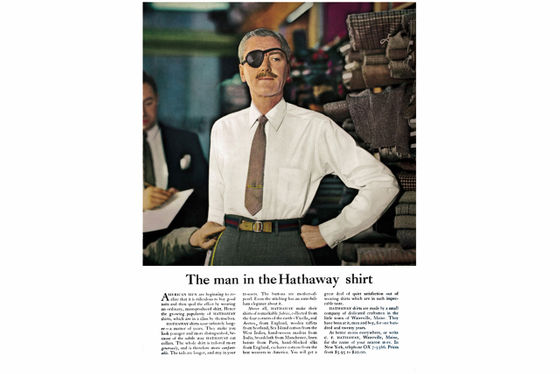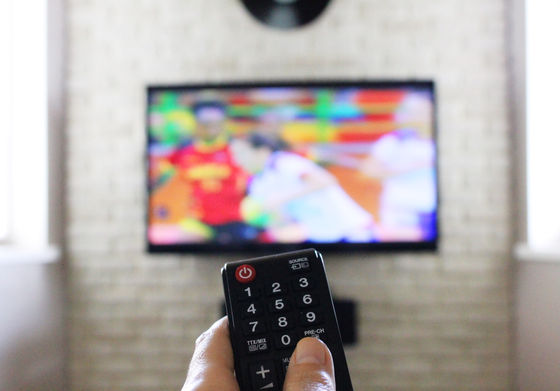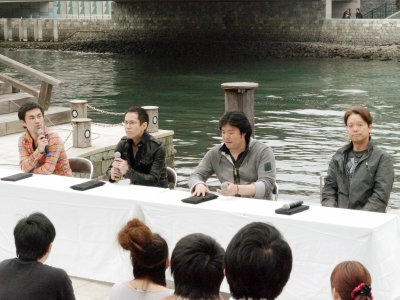'Father of Advertising' Ogilvy explains how to make a selling advertisement

How to Create Advertising that Sales
http://lannigan.org/how_to_create_advertising_that_sells_david_ogilvy.htm
The method of creating a 'sell' advertisement is in a bulleted format, and the important points are summarized in 38 pieces.

1: The most important decision
The most important factor in the effectiveness of advertising is the decision 'how to position the product'. Examples are given as to whether sugar-free carbonated water is positioned as a soft drink or as a liquor split. Ogilvy states that product positioning is more directly linked to the success or failure of the campaign than the content of the ad.
2: Big promise
The second most important thing is 'what to promise to the customer'. And the promise must be in the interests of the customer, not the claims, themes or slogans. Of course, the product must provide that promised benefit.
3: Brand image
All ads need to be part of a consistent brand image.
4: Big idea
Ads need to be based on big ideas in order to bring consumers from indifference to awareness, memory, and action. It is not easy to generate big ideas, but many big ideas once created are simple. Ogilvy cites his ' Hathaway Shirt Advertising Eyepatch ' as an example.

5: First class
For most products, it is beneficial to provide a 'first class' quality image. If the advertisement is ugly, it will give consumers the impression that the product is poor.
6: Boredom is an enemy
No one says, 'I'm bored and buy a product.' Involving customers can be a daunting task.
7: Innovate
Advertising that is trendy or imitates is rarely successful. Trends start, not follow. However, prior testing with consumers is important for innovation.
8: Doubt the prize
Ogilvy said no correlation could be found between advertising awards and product sales. A successful ad is one that focuses on the product rather than the ad itself.
9: Psychological segmentation
It is often rewarding to target based on the psychological classification of what the person thinks, rather than categorizing the market by gender, age, occupation, address, etc.
10: Utilize 'new'
It's the timing of new products that attracts the most attention from consumers.
11: Do everything
Many advertising campaigns are too complex. Instead of reflecting a long list of the various opinions of many executives, we should put together a simple promise and do our best to fulfill that promise.
◆ What works with TV advertising

12: Customer testimonials
Unrelated celebrities should be avoided as they focus more on the celebrity than on the product. It is said that it is effective to appoint any person as long as it is a reliable recommendation.
13: Problem-solving pattern
The method of setting a problem that consumers recognize, showing how the product can solve the problem, and actually proving it is always above the average in sales performance. However, consumers are not stupid either. Cheating is NG.
14: Visual demo
Visualizing promises is effective.
15: Ordinary everyday life
It is also effective to finish it in a short play depicting everyday life.
16: The eloquence is silver
What you show is more important than what you say. Many commercials are drowning viewers in the sea of words.
17: Voice of the actor from the narration
The CM with the voice of the actor is clearly better than the CM with narration.
18: BGM
On average, BGM reduces the number of times you remember a commercial. No one uses BGM for business presentations.
19: Presentation format
Presentation-style commercials are effective when you want to be frank and honest.
20: Leave a start in your heart
The average consumer sees 20,000 commercials each year. In order not to slip out of the consumer's memory, a unique clues like a symbol should be left in the consumer's mind.
21: Anime / manga style
Regular commercials are more effective because it is difficult for consumers to identify themselves with characters, but the partner who created 600 commercials for children says that they are 'effective when talking to children.'
22: Rescue
It is possible to play a dead commercial by thoroughly testing and fixing the problems that have become apparent. Some commercials have doubled the effect by re-editing.
23: Facts or emotions
It is said that focusing on facts tends to be more effective than emotional commercials.
24: Hook
A commercial with an exciting opening attracts more viewers than a commercial that starts quietly.
◆ Effective for print advertising

25: Heading
On average, five times as many people read the text as they read the headline. If you don't market your product in the headline, you're wasting 80% of your advertising costs.
26: Incorporate benefits into headlines
It is said that the effect will be enhanced by making it a headline that promises profit.
27: Include news in headlines
Putting real news in the headline is effective. Consumers are constantly looking for new products, new improvements to older products, and new uses for older products.
28: Keep the heading simple
The headline should say what you want to convey in simple words. The reader does not stop to decipher ambiguous words.
29: Heading length
Long headlines that use 10 or more words are more effective than short headlines.
30: Localize the headline
For local ads with locality, it's helpful to include the city name in the headline.
31: Select a prospect
For products that are consumed only by a specific layer, it is effective to include words that appeal to that layer in the headline. Examples include the words 'mother,' 'bedwetting,' and 'going to Europe.'
32: Even long sentences can be read
The number of readers drops rapidly to the first 50 words, but very little from 50 to 500 words.
33: Appeal with photos
By inserting a photo that suggests a story, the reader glances at the photo and asks himself, 'What's happening?' And reads a copy to get the answer.
34: Before and after
Before-after style ads get more attention on average.
35: Photo or illustration
In most cases, photos are more effective than illustrations.
36: Use captions
The caption at the bottom of the photo is read twice as much as the text. Therefore, whenever you use a photo, you should insert a caption below and the caption should be a mini-ad with your brand name and promise.
37: Article-like layout
It is said that the layout that looks like an article is more effective than the layout that looks like an advertisement.
38: Repeat
Repeated ads may increase the number of readers up to the fifth time.
Related Posts:
in Note, Posted by log1d_ts







